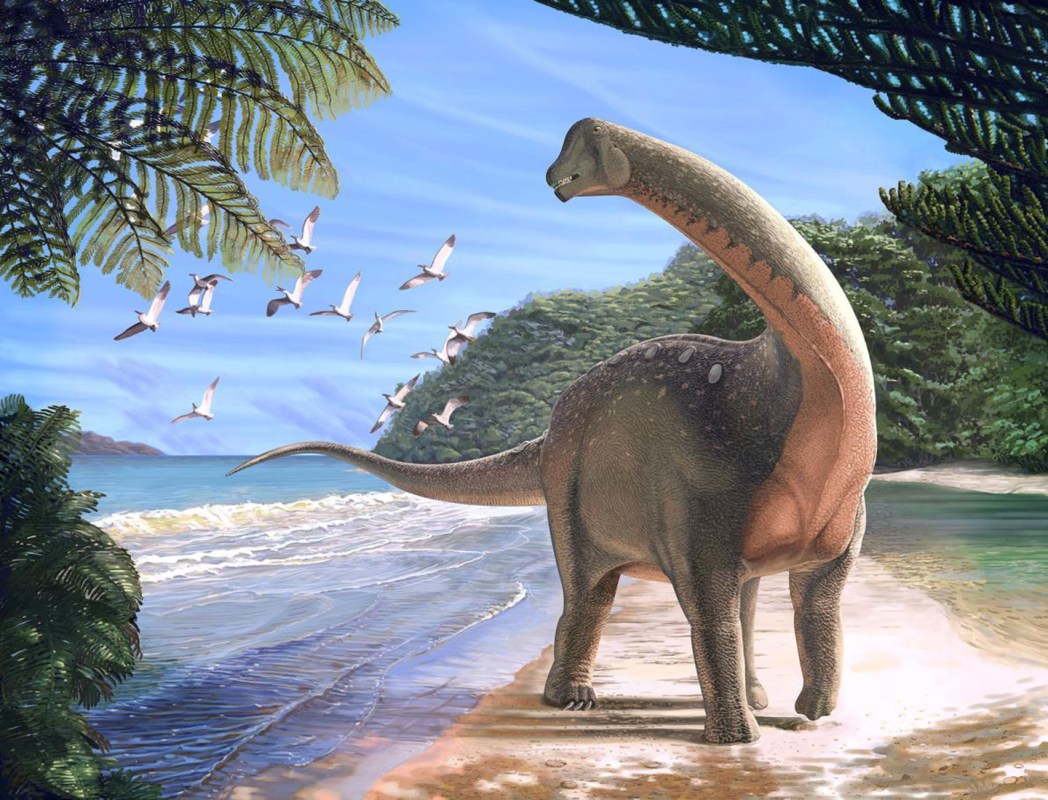A new dinosaur discovered in Egypt, the long-necked Mansourasaurus shaninae, is turning heads among paleontologists. The creature is one of the few dinosaur fossils found so far on the continent that dates to the late Cretaceous period, roughly 80 to 66 million years ago. This is the final chapter in dinosaur history, which ended suddenly when a meteor hit what is now the Yucatán Peninsula. Africa’s fossil record during the late Cretaceous is sparse, according to National Geographic. Study contributor and Carnegie Museum of Natural History paleontologist Matthew Lamanna told Nat Geo that this means scientists aren’t sure which dinosaurs lived where during the period, and how much they mixed with other dinosaurs from different ancient land masses. The Mansourasaurus fossils were discovered by paleontologists at Mansoura University in Egypt in 2013. Lamanna and a team of paleontologists from various research institutions studied the fossil.
“The end of the age of dinosaurs in Africa is one of the final frontiers for dinosaur paleontology,” Lamanna told Nat Geo. The new find “adds a bit of hard evidence to what African fauna was like” during this crucial period.
Thanks for reading InsideHook. Sign up for our daily newsletter and be in the know.


















